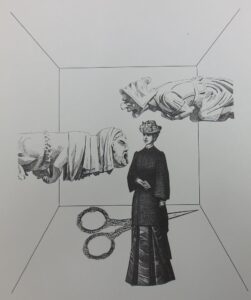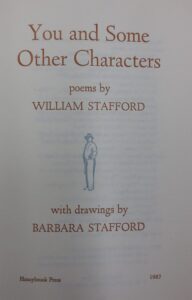By Doreen Simonsen
Humanities & Fine Arts Librarian, dsimonse@willamette.edu
Four hundred years ago, in 1625, the first edition of De iure belli ac pacis (On the Law of War and Peace) by the Dutch jurist and theologian, Hugo Grotius was published. Recently, the Hatfield Library was contacted about our 1646 copy of this book1, which led to some amazing discoveries about the man who owned our copy and his Willamette University connections to historical and current world events.
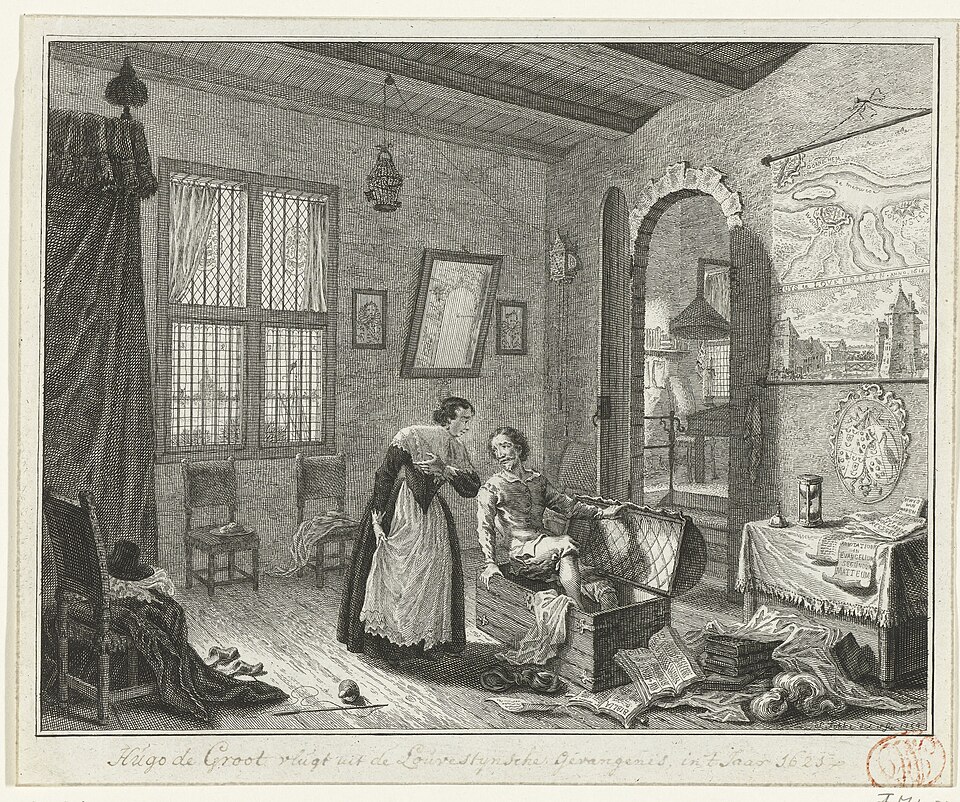
Jan Wagenaar. Hugo de Groot vlugt uit de Loevesteinsche gevangenis 1621. (Hugo Grotius Escapes the Loevenstein Prison, 1621.) Print, 1754.
Hugo Grotius, born in Delft, the Netherlands, (1583-1645) was an intellectual prodigy, who graduated from the University of Leiden at the age of fourteen. After holding various municipal posts, he was arrested for treason in 1618 and given a life sentence in Loevenstein Castle. Here he regularly received a large crate of books for him to read while imprisoned, and his love of books eventually led to his own freedom. In 1621, his wife and her maid managed to fit him [he was a small man] into one of these book crates and it was shipped out of the castle to France,2 where Grotius spent the rest of his life in exile.
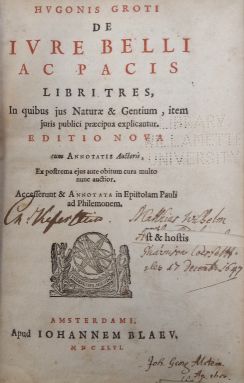
Title Page of De Iure Belli ac Pacis,
7th Ed., 1646.
Hugo Grotius is considered to be the father of International Law. While living in France Grotius penned his most famous work, De iure belli ac pacis (On the Law of War and Peace), which was published in 1625 during the Thirty Years War (1618-1648). This work was Grotius’ response to “the ‘licentiousness’ of Europe’s Christian rulers in rushing to war for frivolous or imprudent reasons’… Grotius worked to lay a foundation of natural law on which the law of nations and its accompanying laws of war could be built.”3 The result is this three volume book.
An article from the November 20, 1897 issue of the Oregon Daily Statesman tells the story of how Willamette University received a copy of this work that now resides in the vault of the Mark O. Hatfield Library. A copy of this article was cut out and glued to the back inside cover of that book, and it shows the book owner’s bibliophilia:
“The Seventeenth Century Hands Down One of Its Literary Gems to a Prominent Salemite.”
“Perhaps it would not do to class President W.C. Hawley, of the Willamette University, a bibliomaniac, but that he is a bibliophile will scarcely be denied by any one cognizant of the professor’s love for books; the rarer the book the nearer he approaches the condition besetting the former devotee.
The last volume to cast the spell of its charm, born of antiquity and rare literary quality, upon this accomplished student, was one that crossed his path in Denver, Colorado, during his late visit there as a member of the head camp of the Woodmen of the World.
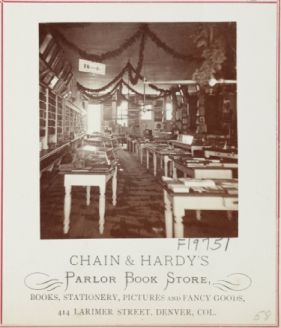
“Chain & Hardy’s
Parlor Book Store.”
1869-1879.
Denver Public Library. 4
Prof. Hawley was never known to go deliberately by an “old book” stand without stopping, and that he should bring up in front of Chain & Hardy’s stalls in that city, in one of his idle hours, needs no accounting for, but that he did so, is a matter of supreme gratification for him by reason thereof, he is the possessor of a copy of Hugo Grotius’ work on “International Law,” a treatise in Latin, that bears the same relation to the particular phase of jurisprudence that the first edition of Blackstone bore to English law. …
It is the star of his collection, and was aired here yesterday for the first time when he took it to his class in international law at the university, and unfolded its rare contents to the interested and delighted young people who have the good fortune to sit under him as pupils.”5
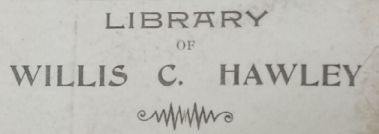
Bookplate in Mark O. Hatfield Library’s copy of
Hugo Grotius De Iure Belli et Pacis 1646.
The owner of this book was Willis C. Hawley, President of Willamette University from 1893-1902. In 1897 Hawley was a professor of Political History, Economics, and Political Science, and while at Willamette he studied Law, became a member of the Oregon State Bar and expert on tariff and tax law. The April 1895 edition of The Willamette Collegian describes how Hawley shared his expertise on tariffs with his students:
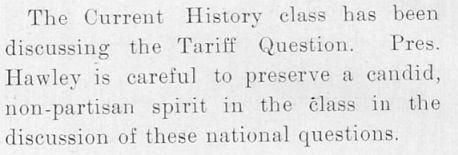
The Willamette Collegian. Vol. VI, No. 7, April 1895. 6
And the 1897 Willamette University catalog lists the textbooks that professors required for their courses.7 One of the texts that Professor Hawley frequently used in his courses was The Tariff History of the United States by Frank William Taussig. 8
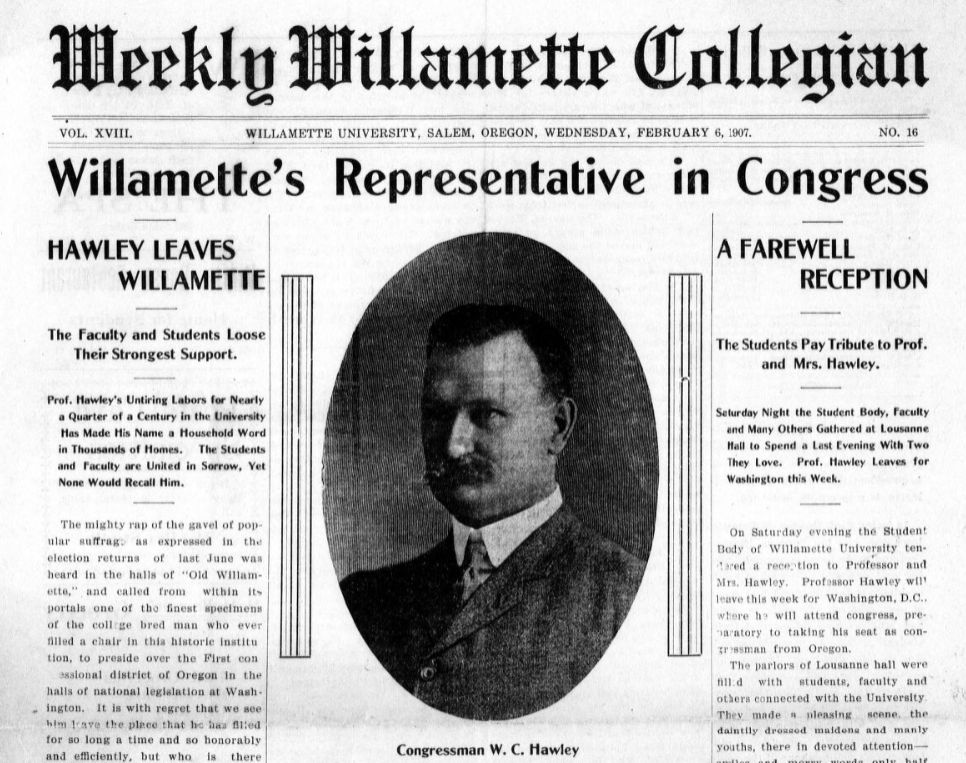
“Willamette’s Representative in Congress.” Weekly Willamette Collegian, Vol. XVIII, No 16. Feb. 6, 1907. 9
In 1902, Hawley stepped down as President of Willamette University to prepare for a campaign to run for a seat in the U.S. House of Representatives. He served in Washington, D.C. as the Representative Oregon’s 1st Congressional District as a Republican from 1907 to 1933, and is best known for introducing legislation, along with Senator Reed Smoot of Utah, that called for raising tariffs. 10

Rep. W.C. Hawley, Reed Smoot, 4/11/29. , 1929 11
“The Smoot-Hawley Tariff Act was legislation that increased average import tariffs by approximately 20 percent in an attempt to protect American farmers and businesses from foreign competition during the agricultural crisis of the late 1920s…. Some historians believe that the tariff was so high that it elicited foreign economic retaliation against the United States and helped convert what would have been a normal economic downturn in the U.S. economy into a major worldwide depression.” 12
To learn more watch this short video: Trade Wars: A Look at the Smoot-Hawley Tariff 13
Both Hugo Grotius and Willis C. Hawley loved books, but they are best remembered for their political writings and activities. Currently the headlines are filled with news about wars challenging International Law and new Trade Wars created by tariffs, issues that Grotius’ and Hawley’s words and experiences could help us to find some solutions. That Hawley owned a rare copy of Grotius’ major work and then donated it to the Willamette University Library is a happy coincidence. If you would like to see this book for yourself, please contact Doreen Simonsen, dsimonse@willamette.edu to make an appointment
Endnotes:
1. Cleary, Matthew, Edward Jones Corredera, Pablo Nicolas Dufour, Jonathan Nathan, Emanuele Salerno, and Mark Somos. “Hugo Grotius’s De Iure Belli ac Pacis: A Report on the Worldwide Census of the Seventh Edition (1646).” Grotiana 44, no. 1 (2023): 154-180.
2. Kingma, Marja, “Two Women, a Lawyer and a Book Chest” British Library European Studies Blog. 19 April 2021. https://blogs.bl.uk/european/2021/04/two-women-a-lawyer-and-a-book-chest.html.
3. Devetak, Richard. “Grotius, Hugo.” In The Oxford International Encyclopedia of Peace. : Oxford University Press, 2010. https://www.oxfordreference.com/view/10.1093/acref/9780195334685.001.0001/acref-9780195334685-e-296.
4. Duhem Brothers. “Chain & Hardy’s Parlor Book Store, Books, Stationery, Pictures, and Fancy Goods, 414 Larimer Street, Denver, Col.” Denver Public Library Special Collections, x-18530, https://digital.denverlibrary.org/nodes/view/1059480
5.“The Seventeenth Century Hands Down One of Its Literary Gems to a Prominent Salemite.” Oregon Daily Statesman. Saturday, November 20, 1897.
6. Local and Personal” The Willamette Collegian. Vol. VI, No. 7, April 1895, p. 12.
7. Fifty-Fourth Year Book of the Willamette University for the Year 1897-8 with Announcement and Curricula for 1898-9: pp. 45-46.
8. Taussig, F. W. (Frank William). The Tariff History of the United States : A Series of Essays. New York ; G.P. Putnam’s Sons, 1888.
9. “Willamette’s Representative in Congress: Hawley Leaves Willamette.” Weekly Willamette Collegian, Vol. XVIII, No 16. February 6, 1907.
10. Carlson, Luke. ” Willis Hawley (1864-1941).” The Oregon Encyclopedia. https://www.oregonencyclopedia.org/articles/hawley_willis/. Accessed May 2, 2025.
11. Rep. W.C. Hawley, Reed Smoot, 4/11/29. , 1929. Photograph. https://www.loc.gov/item/2016843632/
12. “Smoot-Hawley Tariff Act (1930).” In Gale Encyclopedia of U.S. Economic History, 2nd ed., edited by Thomas Riggs, 1219. Vol. 3. Farmington Hills, MI: Gale, 2015. Gale In Context: U.S. History (accessed May 2, 2025). https://link.gale.com/apps/doc/CX3611000828/UHIC?u=s8887317&sid=summon&xid=b6439b7e.
13. “Trade Wars: A Look at the Smoot-Hawley Tariff,” posted on June 18, 2019, by CFR Education, YouTube, 4 min., 29 sec., https://www.youtube.com/watch?v=C4CvLu8HA7I
See Also:
Grotius, Hugo. The Rights of War and Peace. Indianapolis, IN: Liberty Fund, Incorporated, 2005. Accessed May 1, 2025. ProQuest Ebook Central.

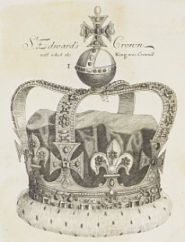

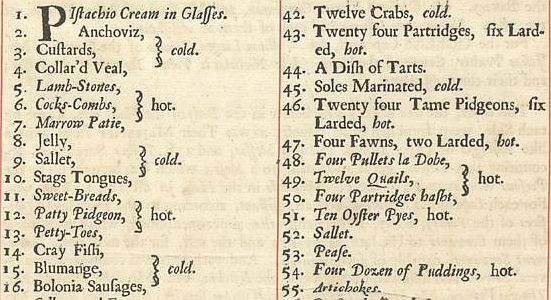
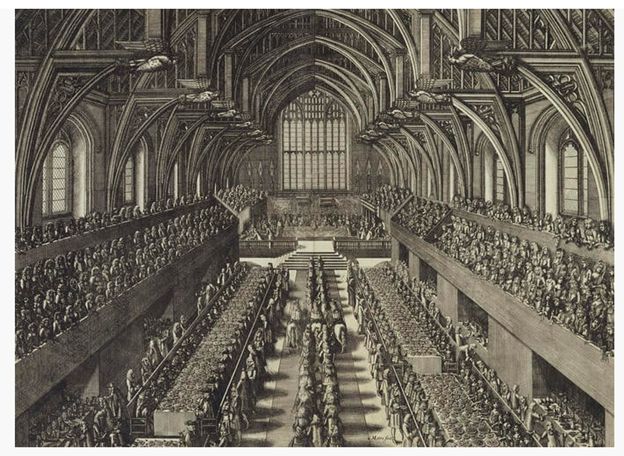

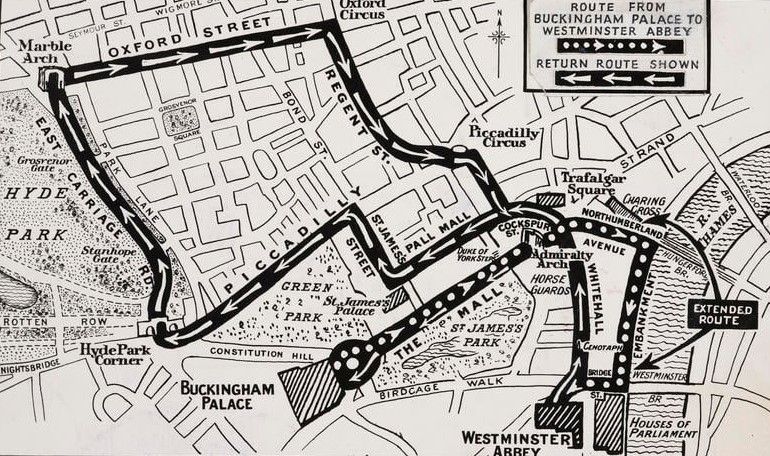



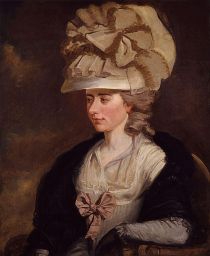
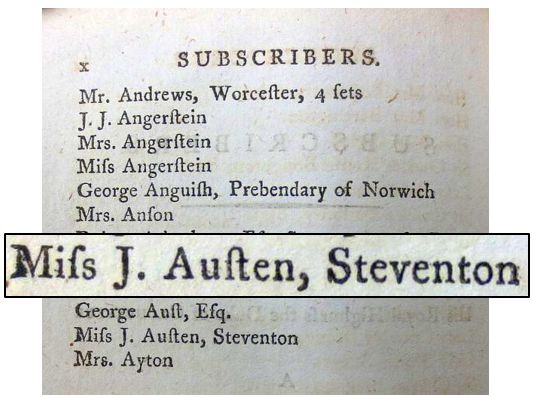
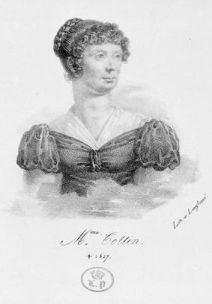
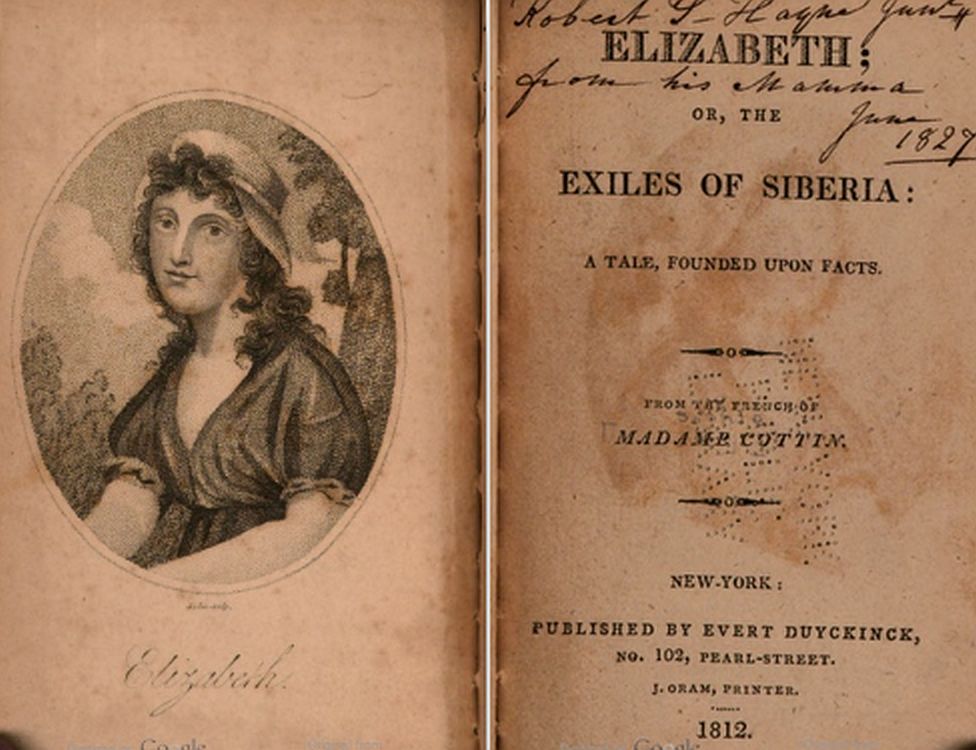

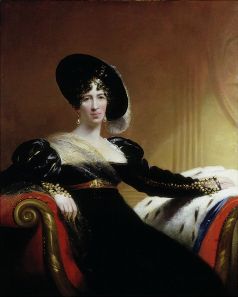
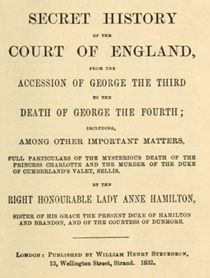
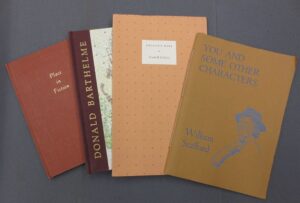
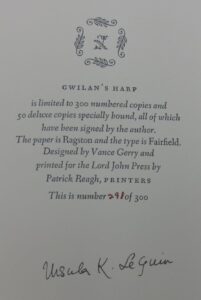 Details about the paper used for printing this book, what type font was used, who designed the book, who printed the book, and who published the book may be listed. In addition, the author’s autograph may be found on this page, too.
Details about the paper used for printing this book, what type font was used, who designed the book, who printed the book, and who published the book may be listed. In addition, the author’s autograph may be found on this page, too.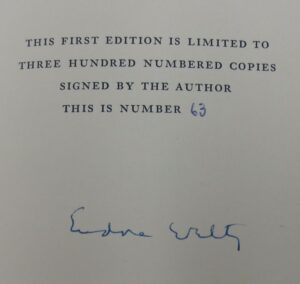 Mrs. Marguerite Cohn heard Miss Welty read the essay on the Poetry Series of the Young Man’s Hebrew Association in New York and asked the author for permission to publish her essay as a limited edition book by her company, the House of Books, in 1957. This is the edition that we have in our collection, which is number 63 of 300 copies printed.
Mrs. Marguerite Cohn heard Miss Welty read the essay on the Poetry Series of the Young Man’s Hebrew Association in New York and asked the author for permission to publish her essay as a limited edition book by her company, the House of Books, in 1957. This is the edition that we have in our collection, which is number 63 of 300 copies printed.